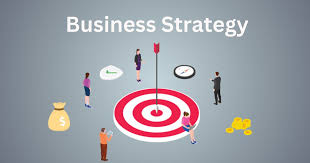Entrepreneurship 101: A Step-by-Step Guide to Starting a Business from Scratch.
Starting a business from scratch most times feel overwhelming, especially when you have little or no knowledge about it.
The entrepreneurial journey is filled with challenges, but it can also be one of the most rewarding experiences of your life.
Walk with me as I show you the essential steps to take to launch your own business right from scratch!
Understanding Entrepreneurship
Entrepreneurship is much more than simply owning a business; it’s about creating value and solving problems. According to the U.S. Small Business Administration, small businesses represent 99.9% of all U.S. businesses and employ nearly 47% of the workforce. It’s clear that entrepreneurship is a vital part of the economy.
Key Attributes of Successful Entrepreneurs:
- Passion and dedication
- Strong work ethic
- Willingness to take risks
- Ability to adapt
These traits are essential as you embark on your entrepreneurial journey.
STEP 1: Identify Your Business Idea
The first step in starting a business is identifying what you want to sell or provide. Your idea should align with your passions and skills while addressing a market need.
Sources for Inspiration:
- Personal experiences
- Hobbies or interests
- Market gaps
Consider asking yourself:
- What problems can I solve?
- What am I passionate about?
- What skills do I possess that can be monetized?
As Thomas Edison wisely stated, “Genius is one percent inspiration and ninety-nine percent perspiration.” Your idea must be actionable.
STEP 2: Conduct a Market Research
Market research is essential for understanding your potential customers and competitors. This step will help you validate your business idea.
Key Research Methods:
- Surveys and questionnaires
- Focus groups
- Competitive analysis
Benefits of Market Research:
- Identifies your target market
- Gauges demand for your product/service
- Understands pricing strategies
According to a study by Entrepreneur.com, businesses that conduct market research are 60% more likely to succeed.
STEP 3: Creating a Business Plan
A well-crafted business plan is necessary for your business’s success. It serves as a roadmap that outlines your goals, target market, and financial projections.
Essential Components of a Business Plan:
- Executive summary
- Business description
- Market analysis
- Organizational structure
- Sales strategies
- Funding requirements
Antoine de Saint once said,”A goal without a plan is just a wish,”so, having a goal is simply not enough, you must work, yes work towards them.
STEP 4: Choosing a Business Financing Structure
The type of business structure you select will affect your liability, taxes, and operational procedures. Here are some common structures:
- Sole Proprietorship:
Simple and ideal for individuals with minimal risk. All profits and losses are reported on your personal tax return.
- Partnership:
Involves two or more people sharing profits, losses, and management responsibilities.
- Corporation: A separate legal entity providing limited liability protection to owners, but with more regulatory requirements.
- Limited Liability Company (LLC):
Combines the benefits of a corporation and a partnership, offering personal liability protection and tax advantages.
Choosing the right structure is essential for your business’s legal protection and tax obligations.
STEP 5: Securing Financing (Capital)
Financing your business can be one of the most significant challenges you face. Fortunately, there are many options available:
- Personal savings: Using your money to fund your venture.
- Loans: Traditional bank loans or SBA loans.
- Investors: Friends or angel investors willing to invest in exchange for equity.
- Crowdfunding: Platforms like Kickstarter or Indiegogo for raising small amounts of money from many people.
According to Fundera, about 75% of small business owners use personal savings to finance their startups.
STEP 6: Registering Your Business
Once you’ve chosen your business structure and secured financing, it’s time to officially register your business with the appropriate government authorities. This includes:
- Registering your business name:
Also known as ‘doing business as’ (DBA).
- Obtaining an Employer Identification Number (EIN): Required for tax purposes.
- Applying for business licenses and permits: Depending on your location and industry.
Registration is vital, as it establishes your business as a legal entity and complies with regulations.
STEP 7: Designing Your Brand
Your brand is more than just a logo; it’s how your customers perceive you. Building a strong brand can help you stand out in a competitive market.
Key Elements of Branding:
- Brand name – Logo design
- Color palette
- Tone of voice
Consider these questions when designing your brand:
- What message do I want to convey?
- Who is my target audience?
- What separates me from the competition?
Branding is an ongoing process that requires consistency and adaptability.
STEP 8: Setting Up Operations
Once your brand is established, it’s time to develop your operations. This includes setting up your business location, whether physical or online.
Operational Considerations:
- Choosing a business location (office, storefront, online)
- Hiring staff and defining roles
- Setting up technology and systems (POS, accounting software)
Efficiency in operations can lead to higher productivity and profit.
STEP 9: Marketing Your Business
Marketing is essential for reaching your audience and driving sales.
Effective Marketing Strategies:
- Social Media Marketing: Utilize platforms like Instagram, Facebook, and LinkedIn to engage with customers.
- Content Marketing: Start a blog related to your industry, creating value and driving traffic to your website.
- Search Engine Optimization (SEO): Optimize your website to rank higher in search engine results.
According to HubSpot, businesses that prioritize blogging are 13 times more likely to see a positive ROI.
STEP 10: The Importance of Networking
Building connections within your industry can provide invaluable support. Networking opens doors to partnerships, mentorships, and new clients.
Networking Strategies:
- Attending industry conferences
- Joining local business associations
- Utilizing platforms like LinkedIn
As the saying goes, “It’s not what you know, but who you know.” Your network is a vital asset in your entrepreneurial journey. Your Network is your net worth.
Continuous Learning and Adaption
The business landscape is continually changing. Staying informed about trends and adapting your strategies is highly essential to remain informed and not being obsolete in your industry.
Ways to Stay Updated:
- Attend workshops and webinars
- Read industry-related books and blogs
- Seek feedback from customers and peers
As Peter Drucker said, “The greatest danger in times of turbulence is not the turbulence; it is to act with yesterday’s logic.”
Embarking on the journey of starting a business from scratch is both challenging and rewarding. By following this step-by-step guide, you can navigate the entrepreneurial landscape more effectively.
Always bear in mind that as an entreprenuer, “Success is not final; failure is not fatal: It is the courage to continue that counts,” as Winston Churchill wisely noted.
Take each step with confidence, embrace the learning process, and be adaptable—all while keeping your vision clear. Your business dream could be closer than you think!
Now, are you ready to take the leap and start your entrepreneurial adventure? The first step begins with you!









Nicely put. Cheers!
casino en ligne France
Wow loads of awesome data!
casino en ligne fiable
Excellent content With thanks!
casino en ligne fiable
Regards! A good amount of facts!
casino en ligne
You suggested this really well.
casino en ligne France
Kudos! Numerous write ups!
casino en ligne
With thanks. A lot of postings!
casino en ligne fiable
Thanks a lot. Plenty of postings.
meilleur casino en ligne
Helpful stuff Thanks!
casino en ligne
With thanks. I like it!
casino en ligne